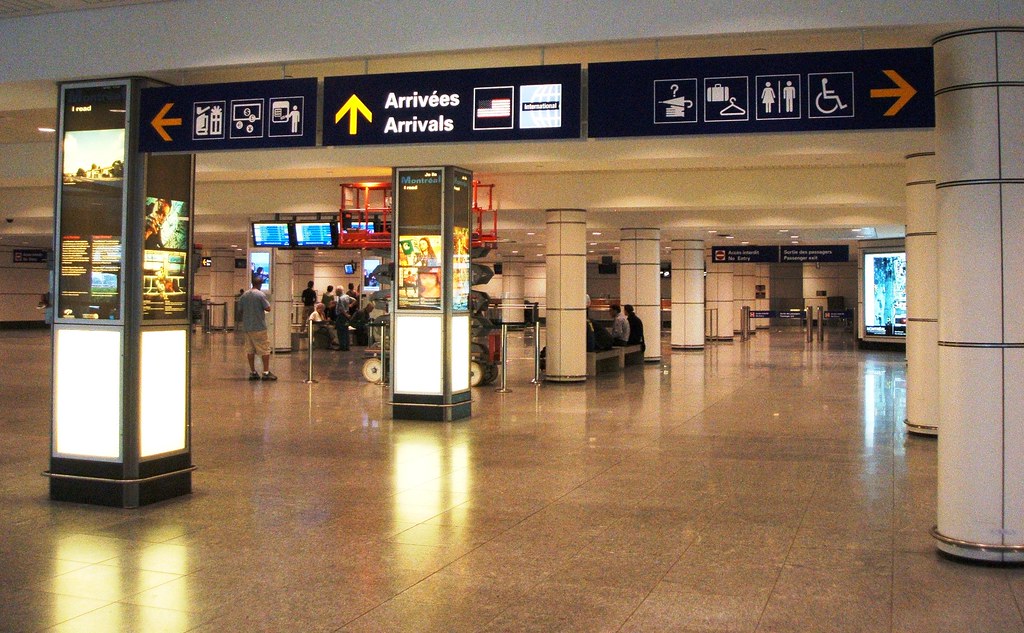As stated in my first post, my ‘favorite’ space is the airport. Dorval airport known today as Montréal–Pierre Elliott Trudeau International Airport is the busiest airport in Quebec today. “Dorval was a farming community and a resort area until the outset of the Second World War. In 1941 it became the home of the Ferry Command and of a military airport, today’s Montréal International Airport. After the war, this airport was an economic magnet.”(The Canadian Encyclopedia). For many years, Mirabel airport was the main hub for international flights and was actually created to replace Dorval. Due to distance outside of the city, passengers were forced to commute which was costly and time-consuming rather than efficient. As a result, the airport has been fairly vacant since 2004 and primarily functions for cargo airlines and as a film set. Since, it has become an abandoned space and since last year in November, demolition of the airport began.
Using Henri Lefebvres’ spatial triad, I will attempt to better understand this space. Lefebvre would identify the airport as a produced space through the social practices that came from capitalism. As a space the airport exists for the individual who is free to travel, is mobile, and works within it. Airports are for societies, symbols of globalization, urbanization, civic progress and overall triumph. They are meant to represent the modern era. However, it is important to keep in mind that travel was a privileged not available to all and with this, it held a certain amount of prestige which was glamorized because to take a plane meant you were going places. International airports are not simple additives to a city or country space but rather became their own independent part of that to which would be found on the outskirts of an areas rather than others forms of transport, such as buses, trains and metros in city spaces. As Lefebvre would suggest, the airport was not yet a space of representational or represented space, rather it was strictly spatial practice. Spatial practice is part of the first dimension otherwise known as the ‘perceived space’ of his triad which constitutes ” ensures continuity and some degree of cohesion…this cohesion implies a guaranteed level of competence and a specific level of performance” (p.290).
For myself, the airport is a representational space which I visited often throughout high school
as an inspirational hub for my personal art work. I enjoyed doing a lot of writing and sketching while I spent my time there. I often question how a space with so much standardization and control through all its forms of security, technologies included, why I was never questioned in that space? A family member of mine works at the airport for customs and when I called him up to ask, he laughed and casually said ” probably because you’re white and you’re a girl, a young one then too”. When he said that, I realized I wasn’t some invisible teen in her own world but invisible in this perceived space due to gender, age and the color of my skin, all of which supposedly does not harm or signal danger to the public, although we all know, I like anyone could do evil rather than good.
Obviously, at the time, I was not aware of ‘lived embodied experience’ proposed through Sara Ahmed’s phenomenology of whiteness, she writes ” Spaces acquire the ‘skin’ of the bodies that inhabit them. What is important to note here is that it is not just bodies that are oriented. Spaces also take shape by being orientated around some bodies, more than others”(p.157). This quote by Ahmed, explains exactly how those who work at the airport orient themselves in making decisions involving our safety and the institution. The airport is not an inherently white space, although it may have been when flights were made affordable for all thus it becomes a space of constant reproduction of ideologies which are practiced every day by employees of the airport. Yet, all humans have to go through the same obedience of following instructions, submitting information and baggage and waiting in lines no matter who you are, however depending on who you are this process could be uncomfortable in comparison to a body that inhabits white skin. Once a space of luxury and accomplishments in the past, is now a waiting zone of impersonal people handling. I would like to return to the space in the near future to really experience and confront the space as much as possible.
Works Cited
– Eggebeen, Janna. “Airport Age: Architecture and Modernity in America.”Google Books. ProQuest, 2007, n.d. Web. 28 Feb. 2015.
– Ahmed, Sara. (2007) “Phenomenology of Whiteness.” Feminist Theory 8(2): 149-168.
– Lefebrve, Henri. “The Production of Space.” In Gieseking, Jen J. And William Mangold, (Eds.), The People, Place, and Space Reader. (289-293). London: Routledge.
– Lapointe, Pierre Louis. “Dorval”. The Canadian Encyclopedia. Toronto: Historica Canada, 2009. Web. 15 Sep 2009.
– “Inside Montreal’s Abandoned Airport Before It’s Torn Down.” The Huffington Post. N.p., 29 Aug. 2014. Web. 28 Feb. 2015.

Hi Zara,
Would you mind making an avatar for yourself so it’s easier to identify you on the blogroll? It doesn’t have to be an image of you. Thank you.
Also, please categorize this properly!
LikeLike
Hi Magdalena,
As you requested, I now have an avatar and the post is categorized properly.
Thank you.
LikeLiked by 1 person
” I would like to return to the space in the near future to really experience and confront the space as much as possible.”
Fascinating project idea…..
LikeLike